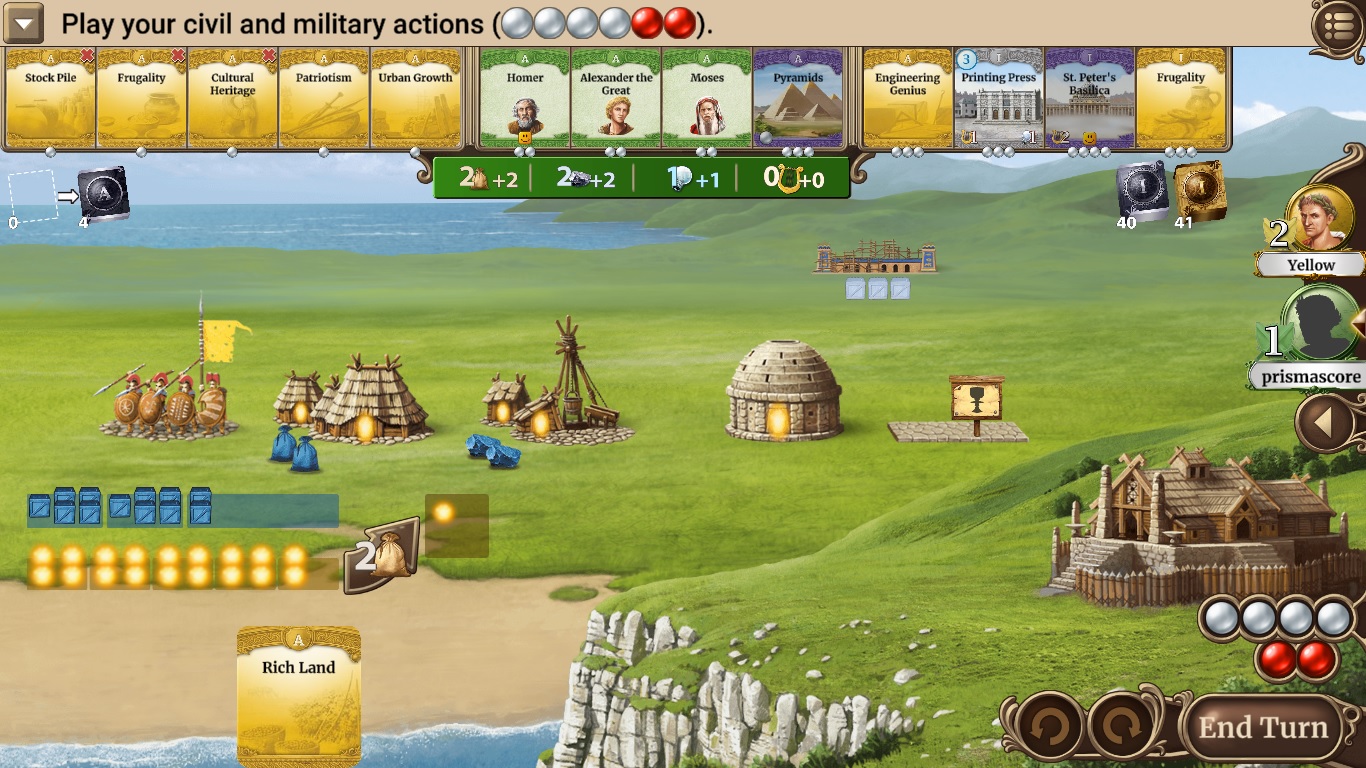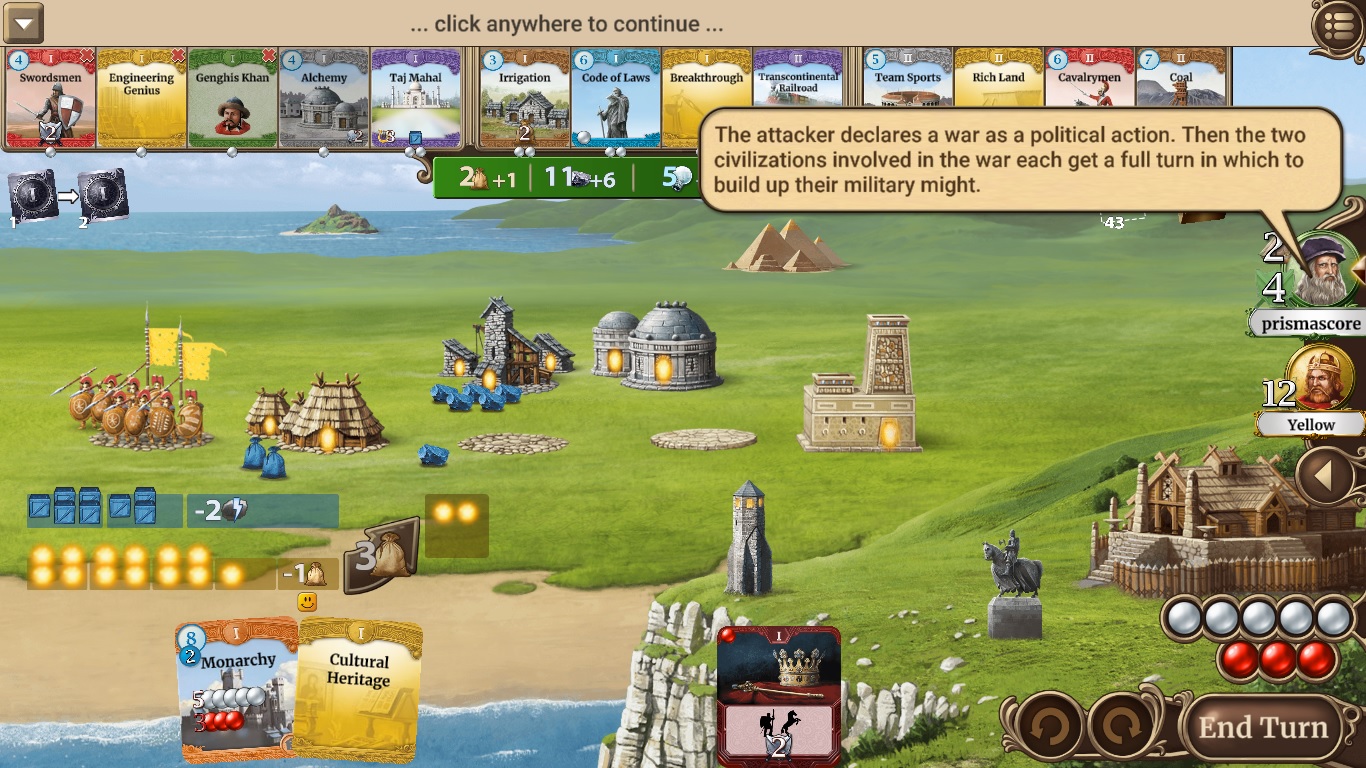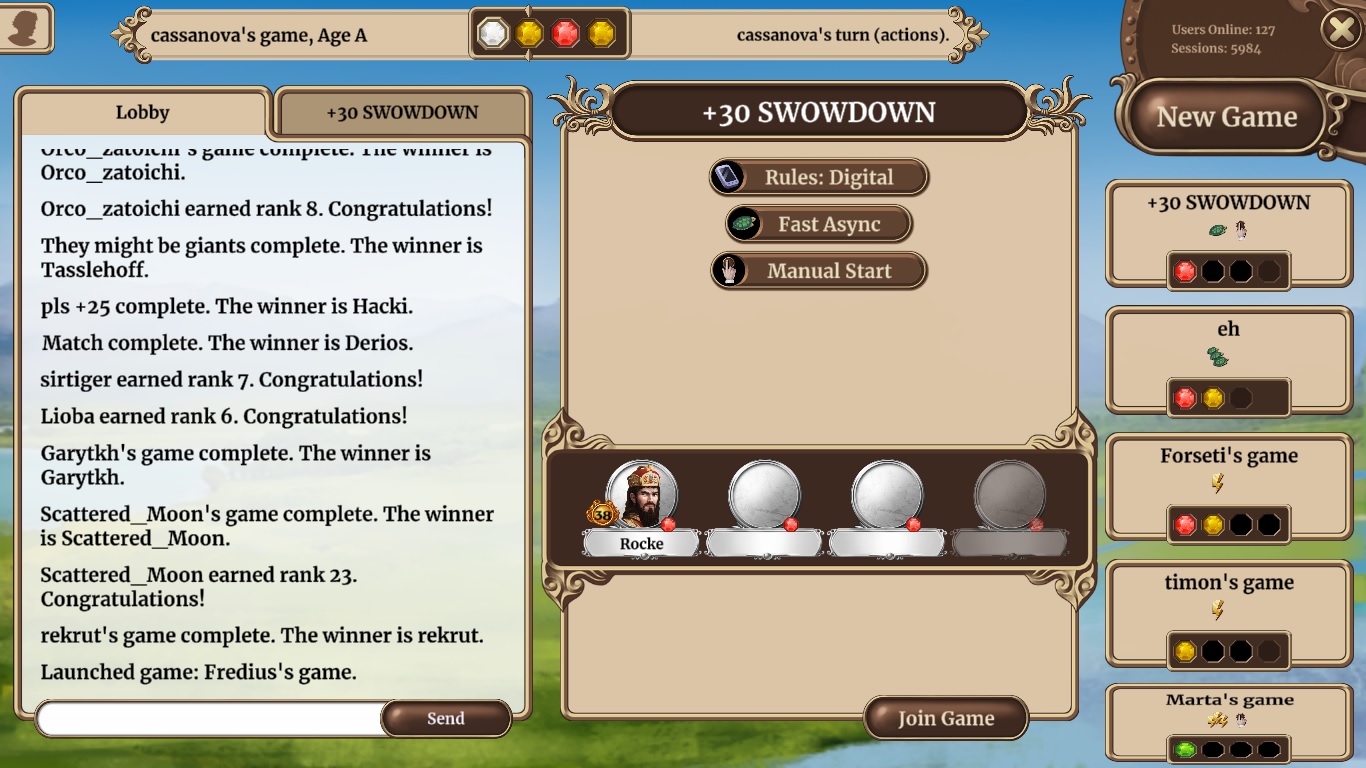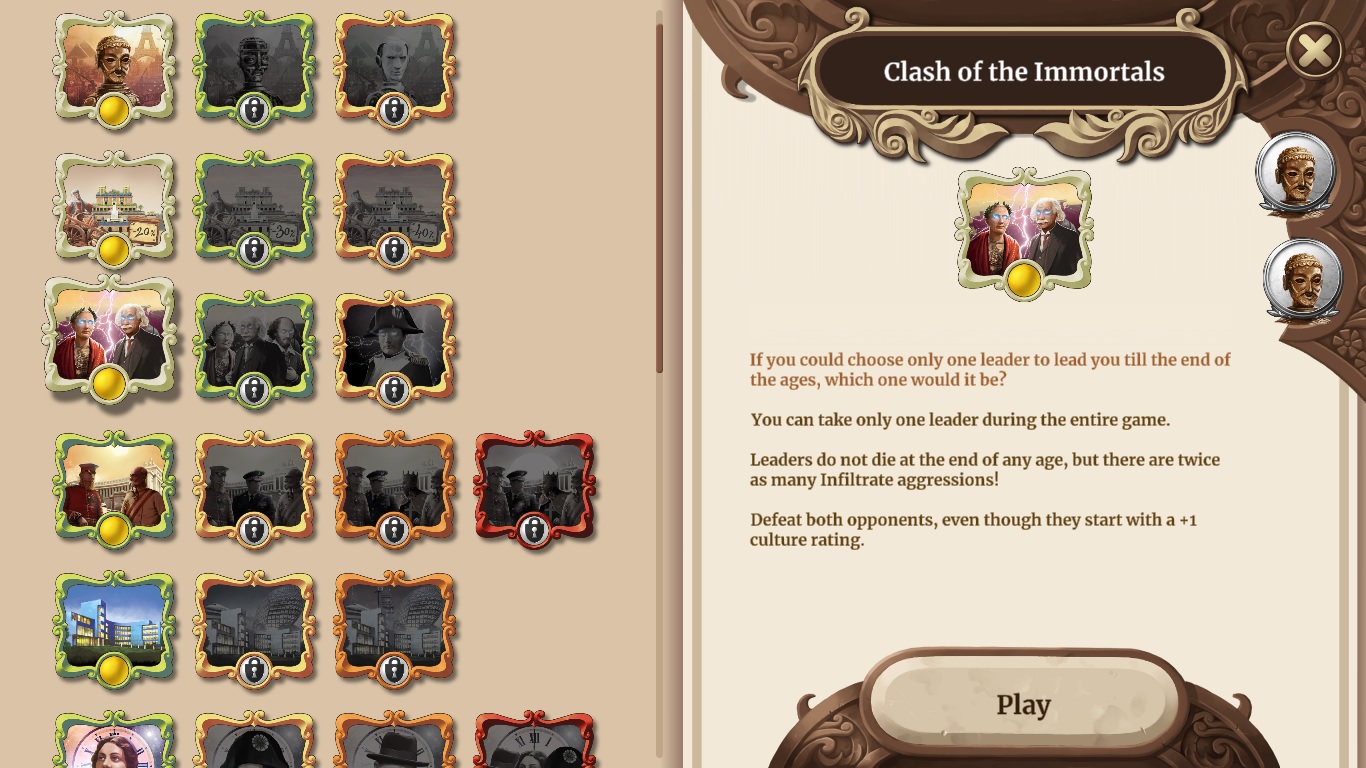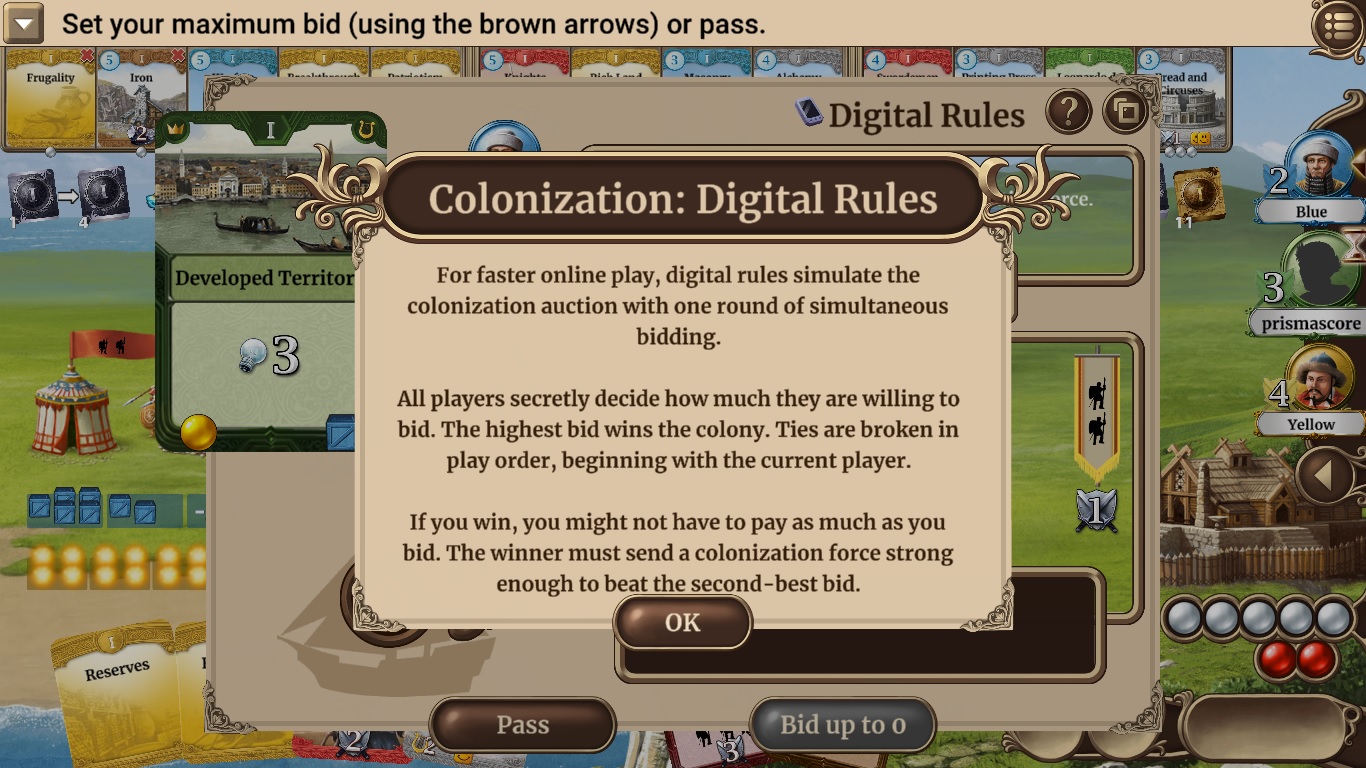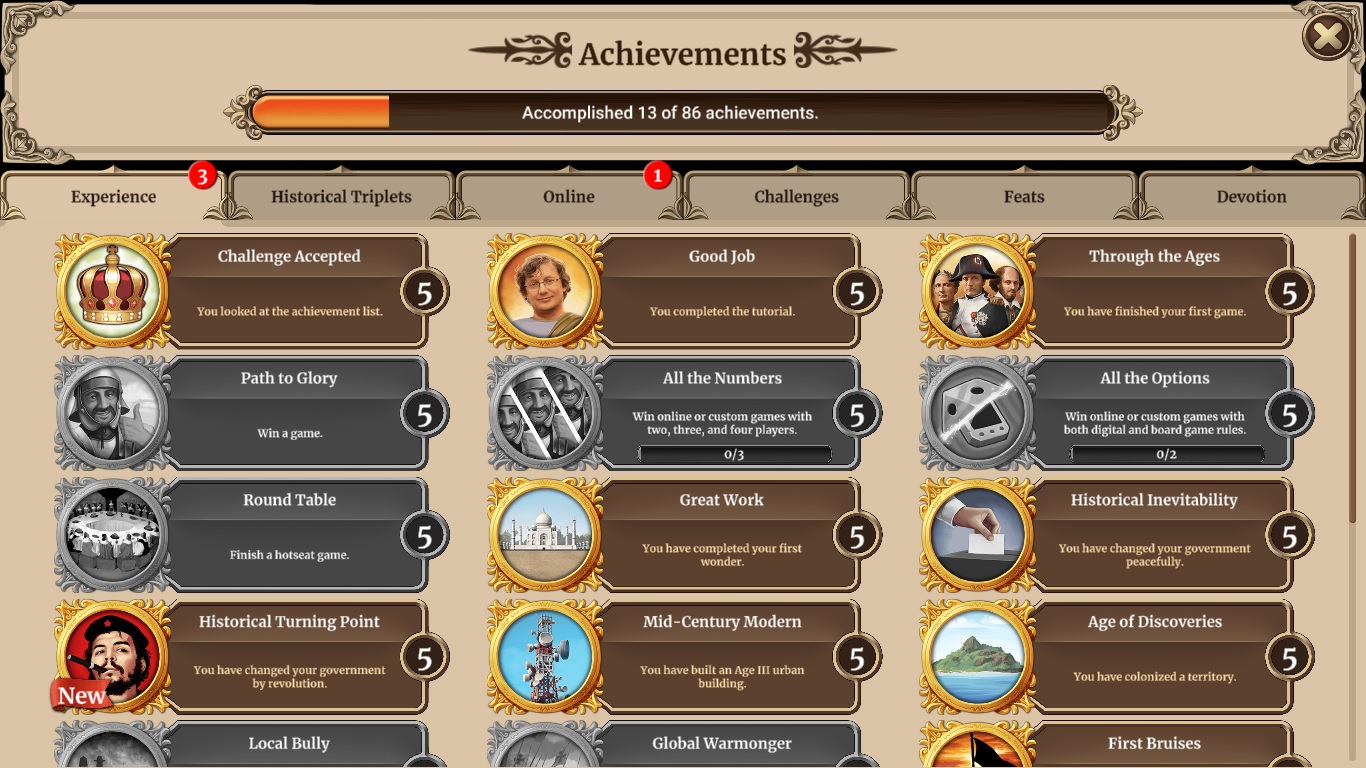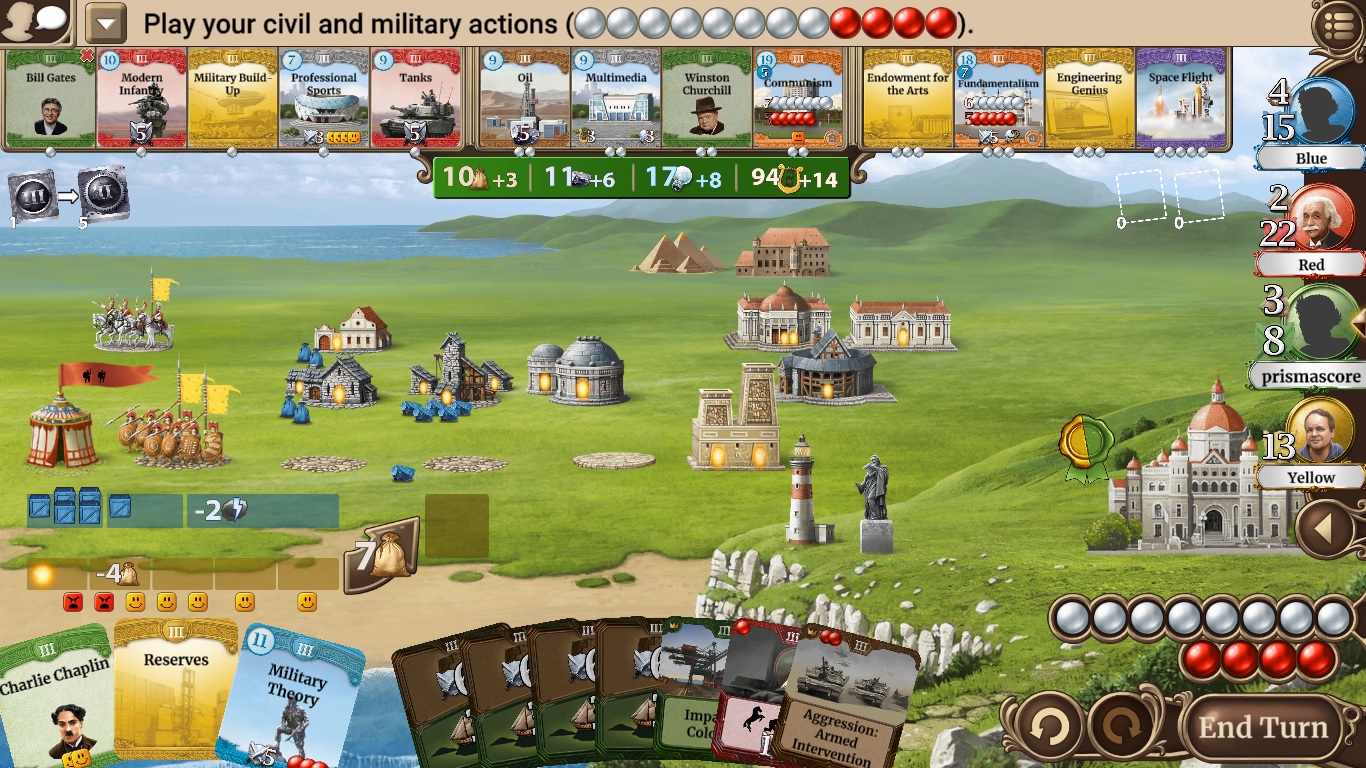![]() As interest in board games continues to rise, so too does the interest in exploring new ways of playing those games. One such way is through digital ‘ports’ of those games – translating them PCs, consoles, phones, and tablets.
As interest in board games continues to rise, so too does the interest in exploring new ways of playing those games. One such way is through digital ‘ports’ of those games – translating them PCs, consoles, phones, and tablets.
While digital versions may not exactly replace the feeling of a physical board game, many add subtle tweaks that such as for solo play, campaign modes, online competition, or simply as a more portable way to enjoy the game. This is new territory to explore. Welcome, to the Pixel Provinces.
![]()
Still sitting comfortably at number 3 in Board Game Geek’s top 100 list, Vlaada Chvátil’s Through the Ages: A New Story of Civilization has collected love and accolades from players all over the world. As it makes its second digital jump from app to Steam port, will this well-loved game be as well received as its predecessor?
The Game
In Through the Ages: A New Story of Civilization, up to four players take on the monumental task of building up a civilization over the span of multiple ages, from antiquity to the modern age. As a player you are responsible for managing your civilization’s food and resource production, military strength, and science and culture levels. Cards like Wonders and Technologies are drafted, and a civilization’s buildings and population are built up via action point management, which is influenced by your government type. Military power can’t be neglected, however, as politics cards can allow other players to wage wars and influence your resources and culture. After the Age III cards are depleted, the player with the most culture is the winner. Through the Ages is a complex game, but it rewards its players with a highly engaging strategic experience that has endless replayability and depth.
Tutorial
The tutorial for Through the Ages is a long one, but if a game as complex as this is going to have a comprehensive tutorial, that’s to be expected. You would need to put in some significant time to go through the entire tutorial in one sitting, but luckily it comes in ten chapters that you can pause and pick up whenever you see fit. These chapters can also be viewed separately, which is helpful resource for players who are not intimately familiar with the game and may need more clarification on its intricacies.
The tutorial does a great job walking you through the game in easily digestible portions. It mimics the simplified, tutorial option of the physical game, at first skipping the more complex rules surrounding military power and instead introducing them at the end of the tutorial once you’ve already learned how to play the bulk of the game. Each chapter is also lightened by a charming injection of humor from your tutorial leader, Ancient Vlaada. These comic interludes provide some much needed levity while wading through the denser parts of the tutorial, making it more tolerable for new players to stay engaged through the process.
Aware of its own complexity, the game also tries to provide ample opportunity for you to reference the rules as easily as possible. Along with being able to revisit each chapter of the tutorial, an in-game rulebook is also included. These resources are a near necessity when bringing new players into a game this complex, and Through the Ages does not shy away from providing easy access to them.
Gameplay Features
It’s evident that one of the focuses of the game’s design from the start was on streamlining the player’s experience as much as possible to make playthroughs easier and quicker. All of the resource, science, and culture calculations are automated and centered on the screen for easy reference, cutting out the downtime that’s traditionally spent on crunching numbers. Moreover, Through the Ages highlights all of the available actions you can take on your turn and darkens the unavailable ones, making the process of assessing your options much simpler when taking your turn. The game also has very prominent undo and redo buttons that let you undo each step of your turn individually and play out different routes. (Try that at the gaming table.) These tools are crucial for beginning players trying to familiarize themselves with the game’s robust strategic elements, but they’re still useful for more experienced players who are trying to juggle their potential options.
Through the Ages comes with two play options: online and local. Impressively, the online lobby stays consistently busy, offering plenty of cross-platform opportunities for improving your online ranking. Online games have eight different timer settings ranging from less than three minutes a turn to no timer at all. This freedom is a nice change of pace from longer, more standard timers present in many digital board game ports. Choosing a longer time limit allows you to play asynchronously, but the live game options are a great choice for those that want to sit and play a “quick” game in one sitting.
The local game option allows you to play hotseat games with your friends or tailor custom games for solo playthroughs. Four different AI opponents are available for custom games: training, easy, medium, and hard. The training AI is great for novice players trying to get accustomed to the game, but once you have your footing the higher AI levels offer a diverse set of difficulties. Playing against just a single AI opponent on higher levels can sometimes make it easy to get left behind, but playing with multiple opponents opens up plenty of varying strategies to bounce off of. Local games also have a challenge option, which provides you with 29 unique game variants and goals to spice up your Through the Ages experience.
Both play options have two different rule sets you can choose from: digital rules and tabletop rules. Although they can also be used in local games, the digital rules are meant to speed up asynchronous games and alter how events and colonization auctions are resolved. While the digital rules removes some of the fun of the auctions, they do drastically improve the asynchronous game experience by cutting down unnecessary downtime between turns. The tabletop rules are available for players that may wish to use the same rules as the physical game, but doing so has the potential to significantly slow down asynchronous games. The game also comes with a set of achievements you can earn through both online and local play.
Functionality
Unlike most digital app games that suffer from size constraints due to phone and tablet sizes, Through the Ages does exceedingly well at managing screen space. The card drafting board and your hand of cards are condensed onto one screen along with your player board and buildings, and you are able to toggle between each player board to look at the other civilizations. The new building layout can be confusing at first to players who may be expecting a card layout similar to the physical game, but a runthrough of the tutorial will make everything crystal clear. The building cards are replaced by a picture rendition of your civilization, and the workers are transformed into glowing lights in the windows of their respective buildings.
The game tries to make it as easy as possible for you to play by offering multiple ways of completing the same action. Most actions can be done by dragging and dropping objects, double clicking, or using action buttons. Having so many different ways of completing the same action makes it easy for each player to customize the way they interact with the system, leading you to choose which option is most intuitive to you based on personal preferences and the kind of device you’re using it on.
Verdict
The physical version of Through the Ages is a wonderfully fun and engaging strategic experience, and with the addition of its Steam version, the digital port continues to live up to that legacy. The game’s UI is smooth and accessible, and combined with its cleverly organized screen, it creates a highly intuitive system that handles the game’s complexities with remarkable ease. It offers a variety of new challenges through the achievement system and challenge mode, and the different AI levels leave ample room for difficulty customization. The online games alter the physical game’s rules to adapt to the new asynchronous landscape, but the lengthier traditional tabletop rules also remain an option for those who desire them. Overall, this digital iteration is a faithful and high quality adaptation of Through the Ages that not only carries with it everything players love of its physical predecessor but carries it into a new age of its own.
Through the Ages is available on these platforms:
![]()
Sara Perry is a contributing writer and aspiring game designer with a love for games both physical and digital. Also cats. She can be best reached via Twitter.
Feel free to share your thoughts with us over on our social media pages!

